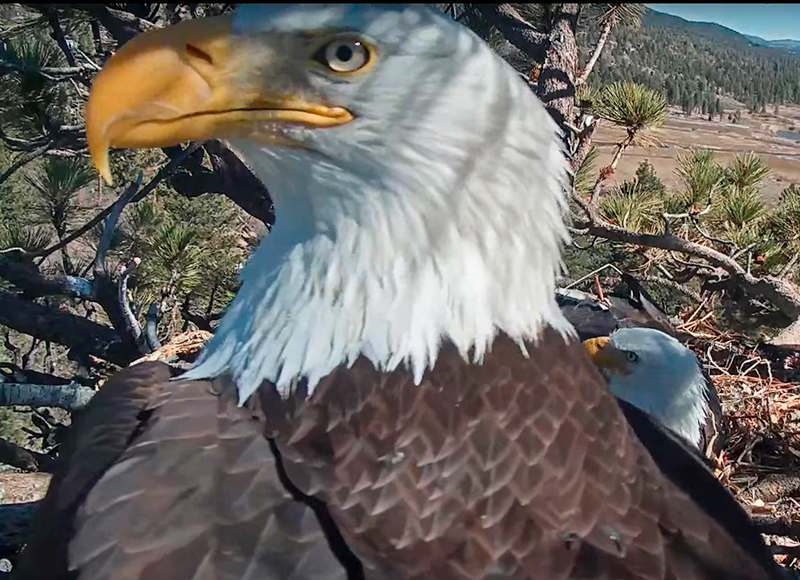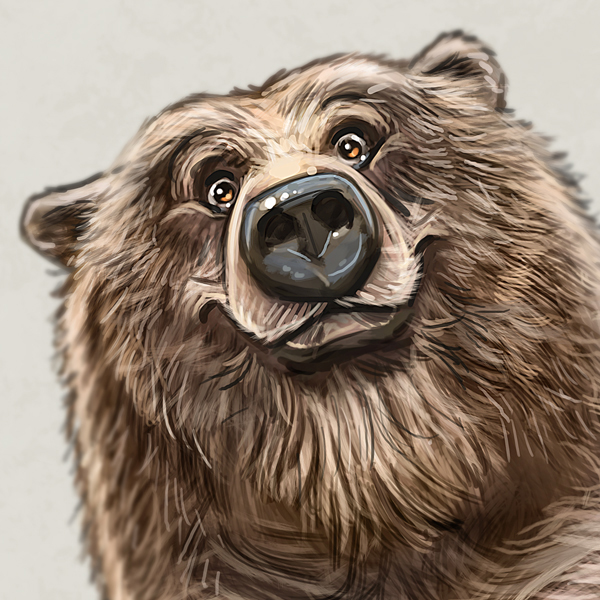
Here’s a painting I did late this week. Not a fully rendered piece, just something I did for fun. I’m still working on another bear, a more finished piece and video. I hope to have that one done in a week or so.
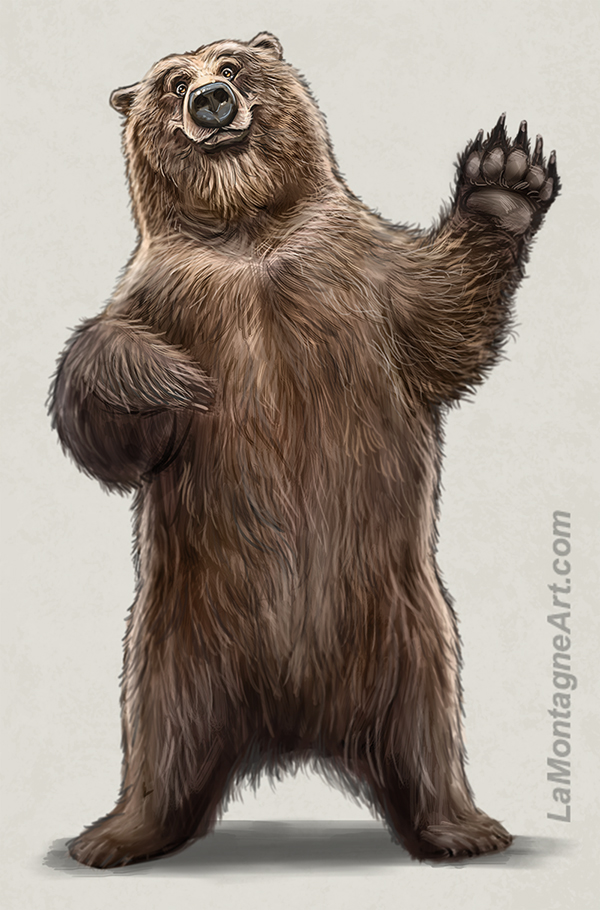 It’s not unusual to see bears in this valley, but it has been a strange season for encounters. The berry crop was poor this year, and bears have been spotted all over town for weeks.
It’s not unusual to see bears in this valley, but it has been a strange season for encounters. The berry crop was poor this year, and bears have been spotted all over town for weeks.
When people fail to pick the ripe fruit from the trees in their yards, it attracts bears. Dog food, bird feeders, dirty BBQs, and garbage will too. Bears have an incredible sense of smell, and they’re attracted to anything that gives off an interesting odour. Dirty diapers will attract bears.
All it takes for a bear to become spoiled and dangerous is too many opportunities to associate people with food.
Shonna and I bought our townhouse condo in 2001. It’s in a well-defined complex with single road access and a couple of other walking entries on the opposite end. We’ve occasionally had elk inside the complex, but in the 21 years we’ve lived here, I’ve never seen a bear on the property.
A couple of weeks ago, while checking the mail, I noticed a sizeable pile of scat six feet from our front door. If you’ve never seen bear poop, it’s unmistakable.
At the end of our street, nowhere near a wilderness area, a well-used gravel path passes beside a daycare. A week before, as I rode my bike around the building heading for downtown, I was surprised to see a mother black bear and two cubs in my way. I hit the brakes, breathed something like “oh shit,” and slowly backed up, wondering what she would do.
She and her cubs looked right at me, but I got away without a confrontation. It was only a half block from home, so I called the Bear Report Line, as did several others.
Still on the phone when I got home, I stepped onto our kitchen balcony to see the Mom and cubs walking by on the street below. It was just after noon.
Many in town have seen this bear and her two cubs, another black bear and her three cubs or several other single black bears looking for food in suburban neighbourhoods.
I recently had a cable internet issue requiring a service call. The tech who came to sort it out lives in an apartment-style condo building near the other end of our street. While walking his dog one evening, he saw a grizzly in his parking lot. Others in his building have seen it too, and warnings are now posted around the property.
Last Sunday, our next-door neighbour Chris sent me a text warning at about 9:15 pm that the black bear and three cubs were spotted walking down a long road that leads to the top of our condo complex. Shonna would be biking home an hour later from her part-time job at Safeway.
Here’s a late-night photo Chris took from his balcony at the end of August.
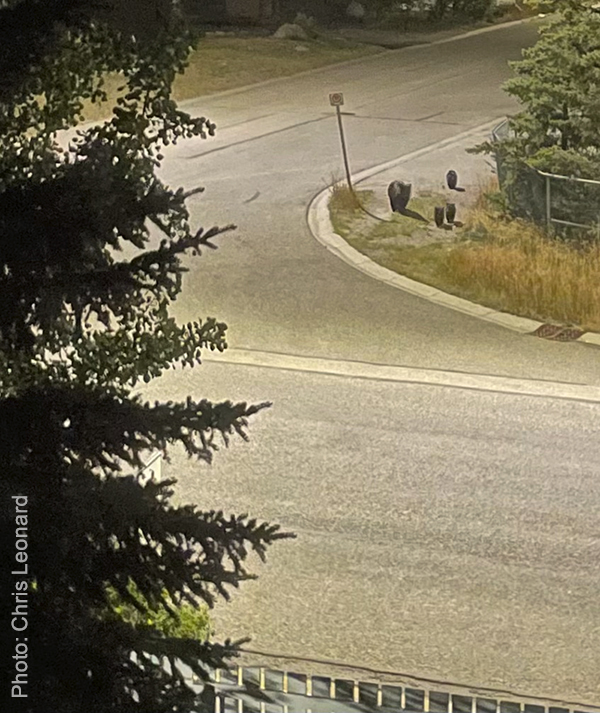 I called Shonna to warn her and said I’d keep an eye out. She takes well-lit main roads to get home, away from the current bear sighting. But this year, they can be anywhere, including downtown.
I called Shonna to warn her and said I’d keep an eye out. She takes well-lit main roads to get home, away from the current bear sighting. But this year, they can be anywhere, including downtown.
A half-hour later, Mom and cubs were walking down the road inside our complex, straight toward our front door. Four people stood in front of our place, taking pictures and videos with their phones. I warned them from my open living room window that they were in a dangerous spot and should leave.
They were dismissive and waved me off, a typical tourist response. But I think these were locals who should have known better. Shortly afterward, my neighbour was more blunt when he warned them about their poor choices.
Chris and I were more concerned about harm coming to the bears. When stupid people trigger an encounter that forces a bear to defend itself, the authorities shoot the bear and orphan her cubs. All for an Instagram post.
Fortunately, this bear was more intelligent than those people. She turned around and went back the way she came. The four humans finally left as well, their departure significantly increasing the average IQ of our neighbourhood.
Though the bears were no longer in sight, I knew they’d still be close.
Shonna called before she left Safeway, and I told her I’d be waiting. Bear spray in hand, I stood at the open front door until I heard her repeatedly hitting her bike bell as she drove into the complex. I opened the garage door as she turned the corner so she could go right in, ending our evening’s excitement.
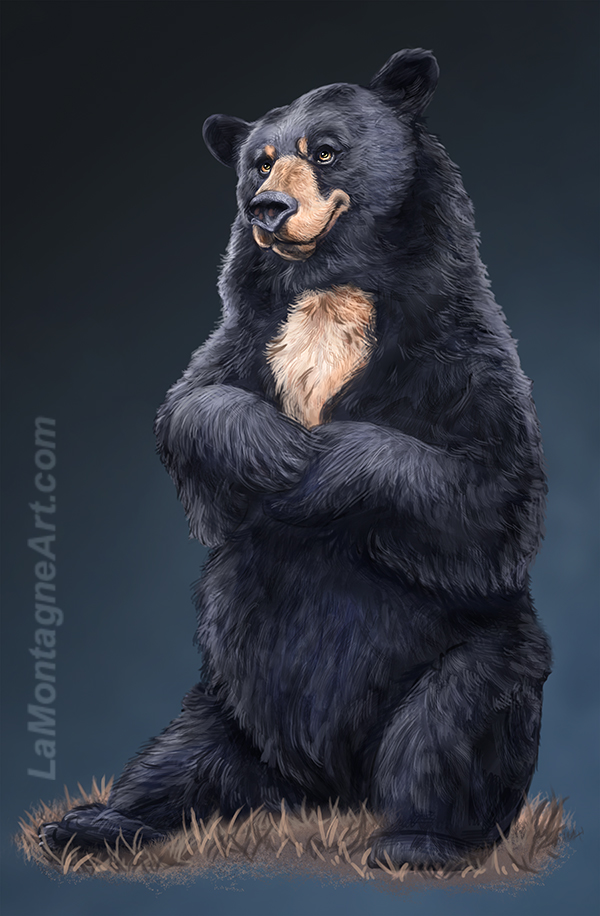 I have a complicated love-fear relationship with bears.
I have a complicated love-fear relationship with bears.
The first whimsical wildlife critter I painted in 2009 was a grizzly bear, and I’ve painted more bears than any other animal. I’ve spent countless hours at Discovery Wildlife Park, having close encounters with their rescued orphan bears, especially a favourite named Berkley. I’ve painted her quite a few times.
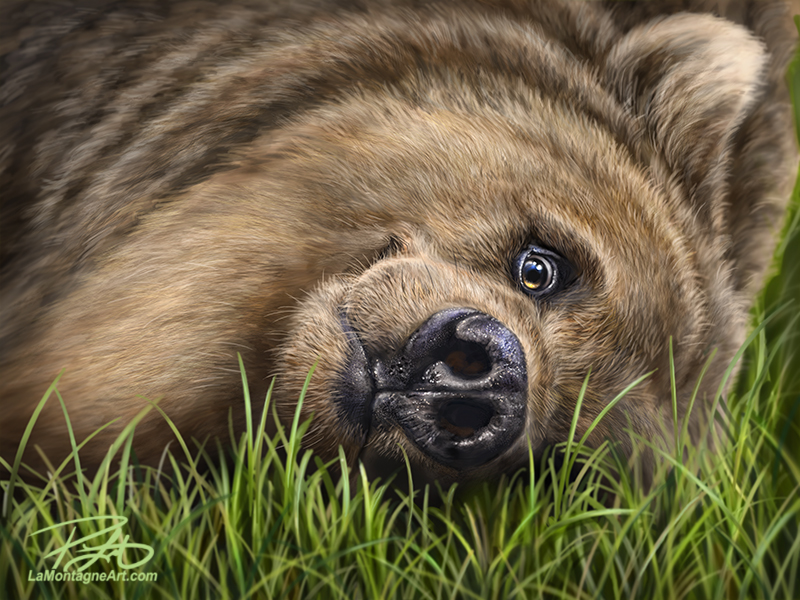 On the flip side of that coin, I am unreasonably terrified of bears. For years, I’ve tried to get used to camping in a tent in bear country.
On the flip side of that coin, I am unreasonably terrified of bears. For years, I’ve tried to get used to camping in a tent in bear country.
Bears are more likely to avoid people than seek them out. I know that if you keep a clean campsite, don’t bring any strong smells into the tent with you, and sleep away from where you cook, you’re unlikely to attract bears.
I know what to do if I encounter a black bear or grizzly. I make noise while out in the woods, carry bear spray and know how to use it. I know that bears have far more to fear from us than we ever do from them, that bear attacks are almost unheard of and usually defensive, prompted by a human doing something foolish.
Bears don’t kill people. People kill bears.
And even with that knowledge, I’ve never been able to shake the phobia while camping or hiking in bear country. Every noise is a bear, especially from dusk ‘til dawn. My camping companions have taken great delight in mocking my bearanoia, despite having phobias of their own.
Am I having fun yet?
After countless camping trips, not sleeping well, annoying others with my nervousness, and living with the shame of not being able to talk myself out of it, I’ve given up camping in tents in the Rockies. I return home more pissed off than relaxed.
Besides, a cabin is much more comfortable, especially when it rains.
Strange that I had no concerns on our recent kayaking adventure on Vancouver Island, living in a tent in an area with a dense population of black bears. I slept great every night. Is my fear geographical?
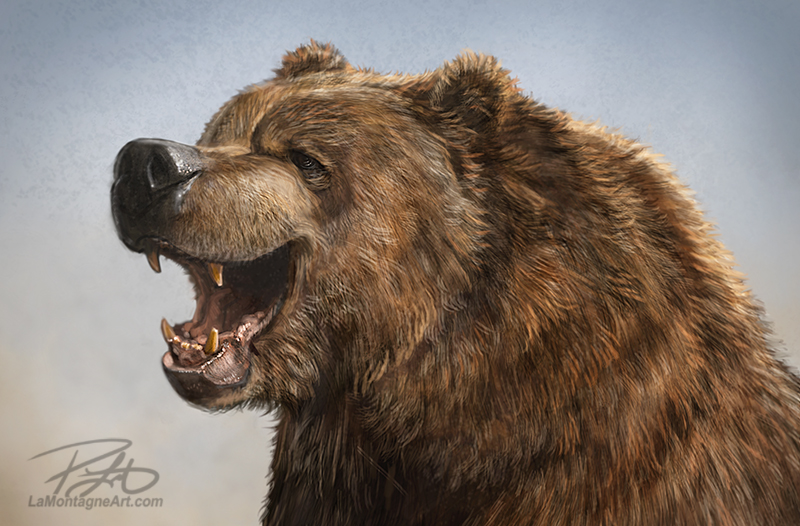 The most remarkable recent bear encounter was at the September 3rd Mountain Made Market when a black bear tried to walk into the Civic Centre in the middle of the day, about forty feet from my table. Fortunately, the Town building monitor, Maurice, a genial and helpful gentleman, stood at the door waving his arms and making noise, convincing the bear to seek a different path. There’s a man who’s good under pressure.
The most remarkable recent bear encounter was at the September 3rd Mountain Made Market when a black bear tried to walk into the Civic Centre in the middle of the day, about forty feet from my table. Fortunately, the Town building monitor, Maurice, a genial and helpful gentleman, stood at the door waving his arms and making noise, convincing the bear to seek a different path. There’s a man who’s good under pressure.
I’ve enjoyed my market experiences over the past year. Decent sales, close to home, and I get the same great location in the Civic Centre each time. Connecting with other vendors and my customers, I always learn something new.
This market was especially fun because Alexander Finbow occupied the next table. He owns Renegade Arts Entertainment here in Canmore. Alex has been ready to publish an art book of my work since 2016. He has been very patient, is still interested and we talked more about it.
Alex figured out that I’ve been making too big a deal out of it, trying to put together one big book instead of a smaller one. He suggested that rather than try to cram my whole career into one volume, I make it more specific, and pick stories and artwork that fit a theme. Then if the first book does well, there will be more books on other parts of my work in the future. That not only relieves a lot of pressure, but it’s a sound business plan as well.
Sometimes you just need somebody to point out the obvious.
The first art book is about bears. Perhaps it always has been.



 For our 25th anniversary two years ago, Shonna and I had planned a week of glamping and kayaking on Vancouver Island.
For our 25th anniversary two years ago, Shonna and I had planned a week of glamping and kayaking on Vancouver Island.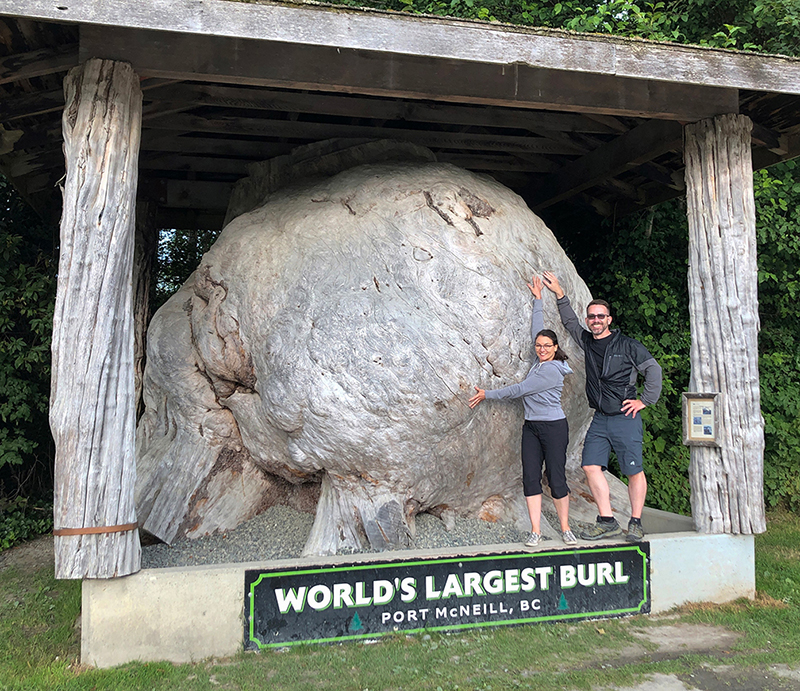 I captioned this with “BEST VACATION EVER!”
I captioned this with “BEST VACATION EVER!”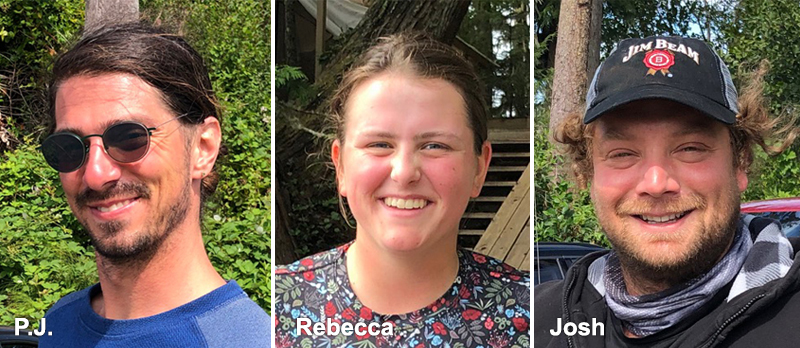 THE CREW
THE CREW THE FOOD
THE FOOD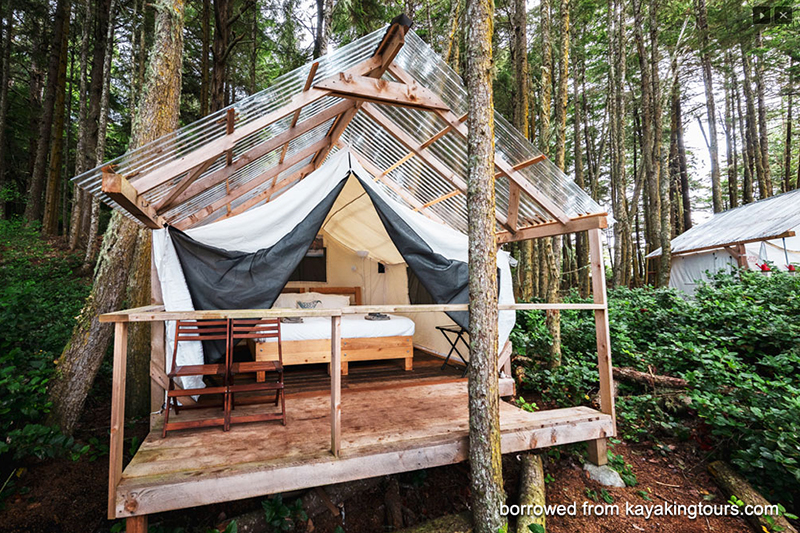 THE CAMP
THE CAMP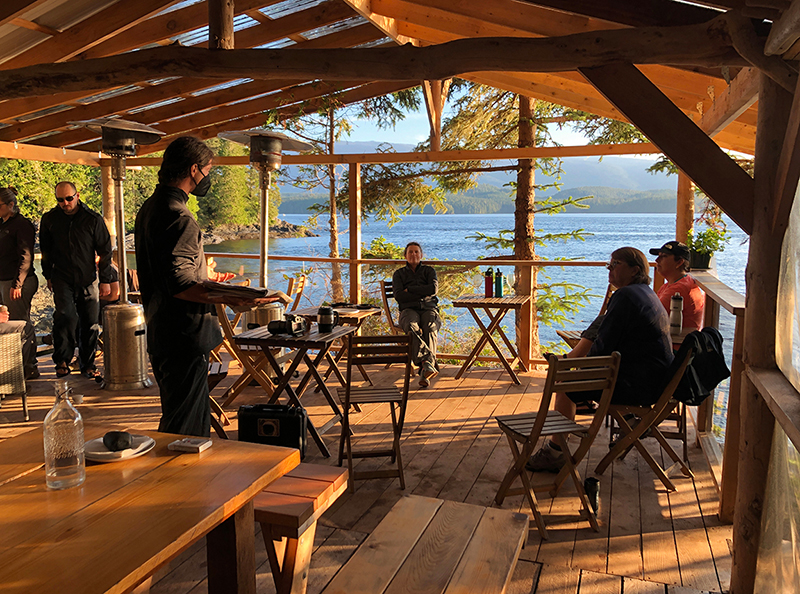
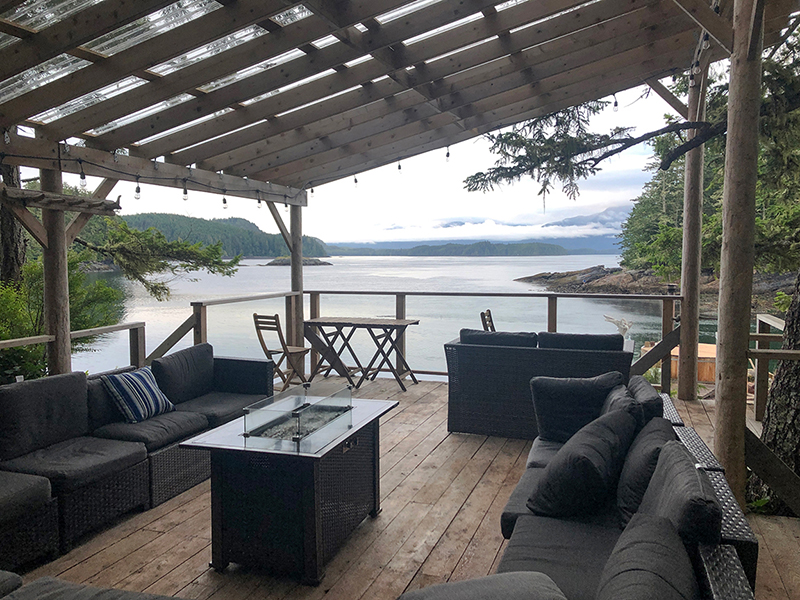 Communal areas include a large kitchen with a covered dining area, a lounge with comfortable couches, a gas fireplace, and a woodfired hot tub.
Communal areas include a large kitchen with a covered dining area, a lounge with comfortable couches, a gas fireplace, and a woodfired hot tub. KAYAKING
KAYAKING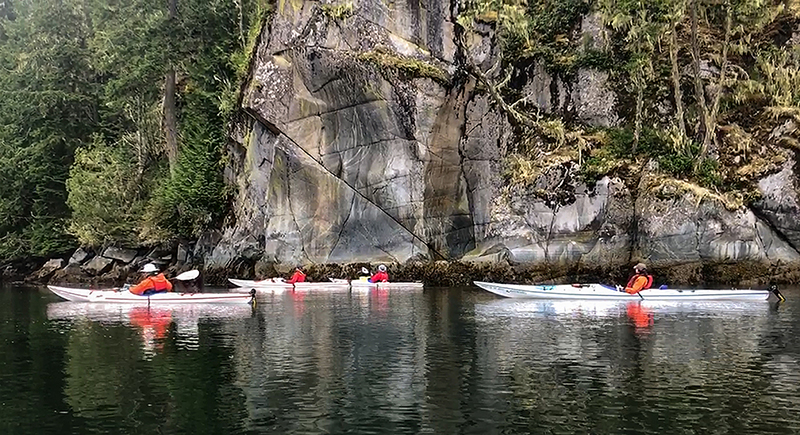 Our exceptional guides taught us about the landscape, currents, tides, wildlife, and the indigenous people who first inhabited the area. Each day, a different route would introduce us to new experiences.
Our exceptional guides taught us about the landscape, currents, tides, wildlife, and the indigenous people who first inhabited the area. Each day, a different route would introduce us to new experiences.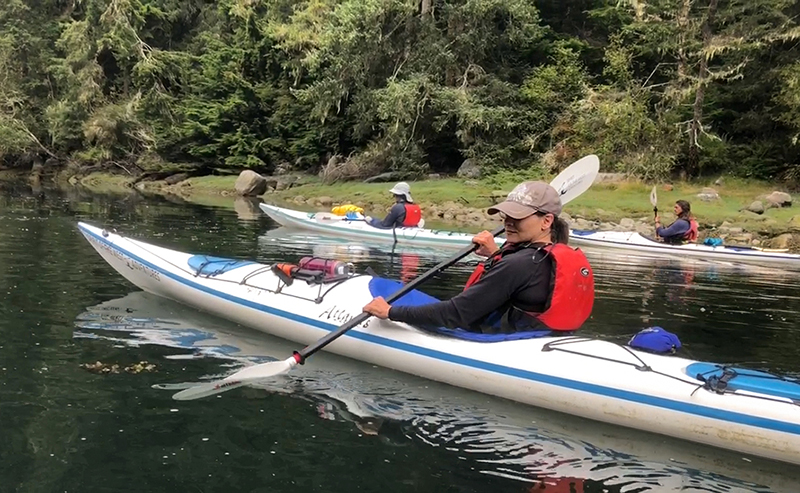 Vancouver Island is a coastal temperate rainforest. While we prepared for rain and even expected it, we didn’t have any on our whole trip. Every morning we were socked in with fog until after noon, and I loved it. Kayaking in calm foggy waters is a spiritual experience, the forest and rocks drifting in and out beside us as we crept into little coves and inlets.
Vancouver Island is a coastal temperate rainforest. While we prepared for rain and even expected it, we didn’t have any on our whole trip. Every morning we were socked in with fog until after noon, and I loved it. Kayaking in calm foggy waters is a spiritual experience, the forest and rocks drifting in and out beside us as we crept into little coves and inlets.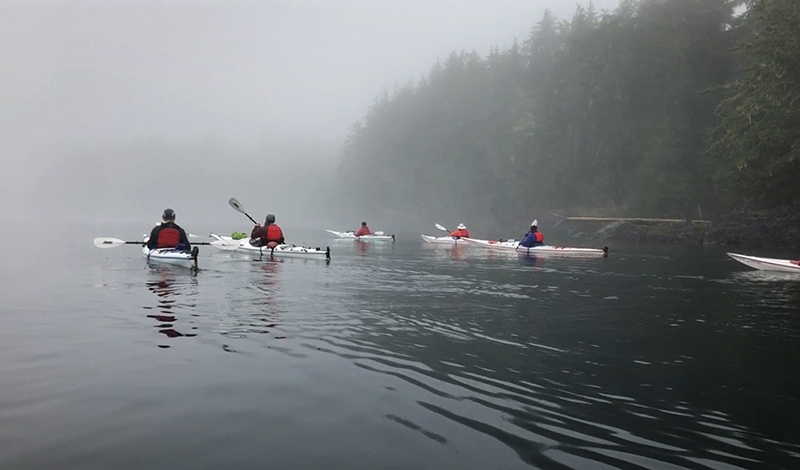 It was quiet, often punctuated only by the sound of humpback whales surfacing nearby.
It was quiet, often punctuated only by the sound of humpback whales surfacing nearby.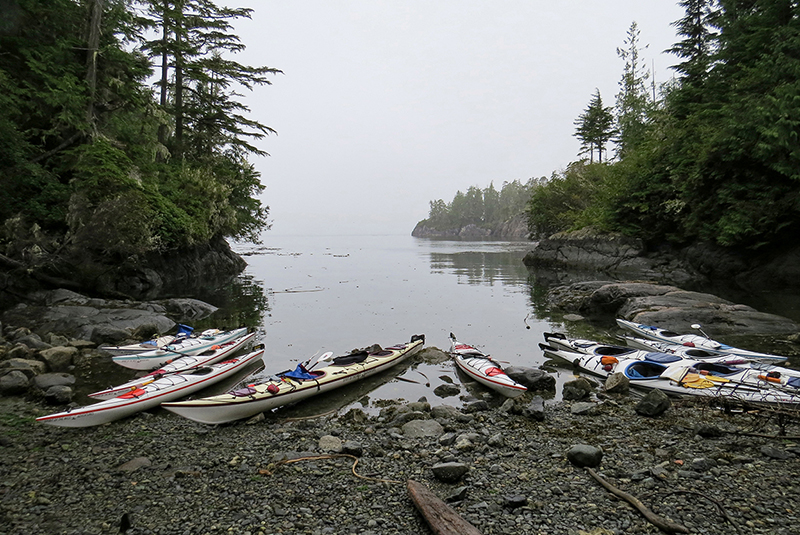
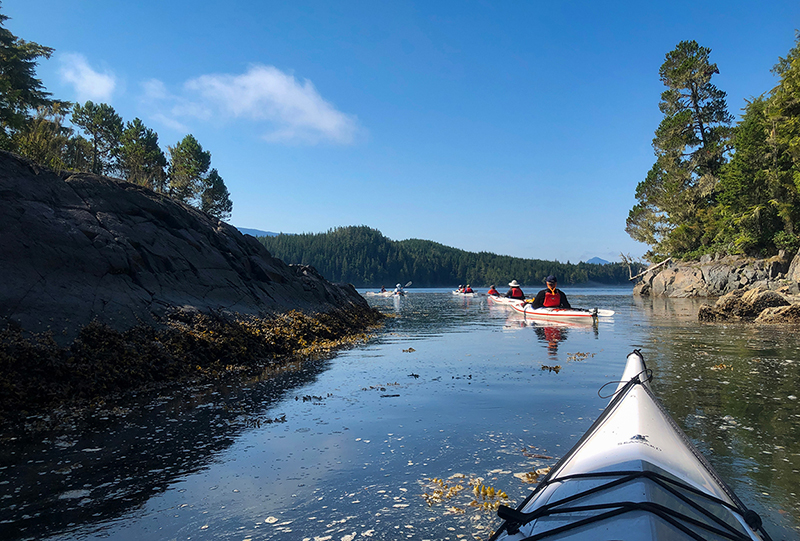 On our final afternoon, a weather system arrived earlier than forecast (surprise, surprise), and we had to cross Parson bay with 8-knot winds. It was a workout, each of us paddling hard to stay with the group to get from one sheltered beach to another. We endured wind and choppy waters all the way back but arrived on our home beach with enthusiasm. It felt like a team effort.
On our final afternoon, a weather system arrived earlier than forecast (surprise, surprise), and we had to cross Parson bay with 8-knot winds. It was a workout, each of us paddling hard to stay with the group to get from one sheltered beach to another. We endured wind and choppy waters all the way back but arrived on our home beach with enthusiasm. It felt like a team effort.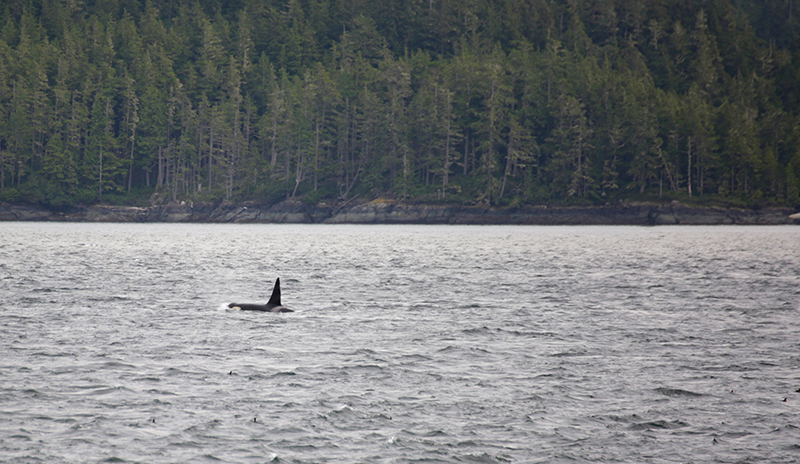 WILDLIFE
WILDLIFE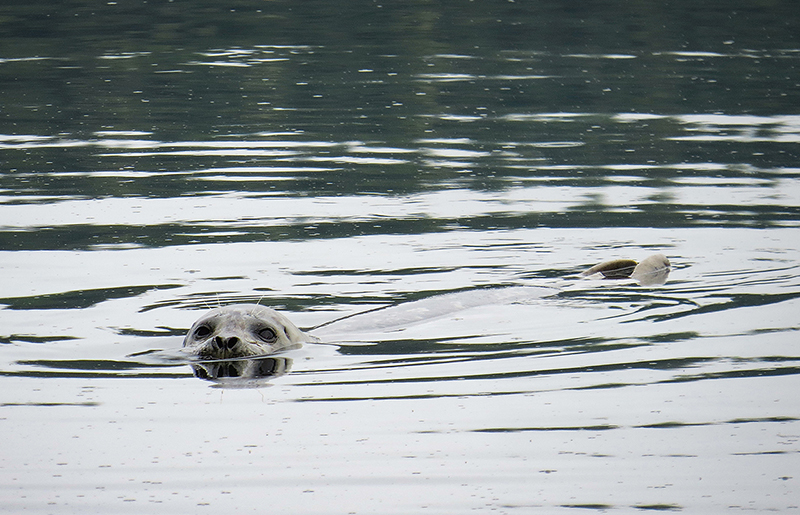

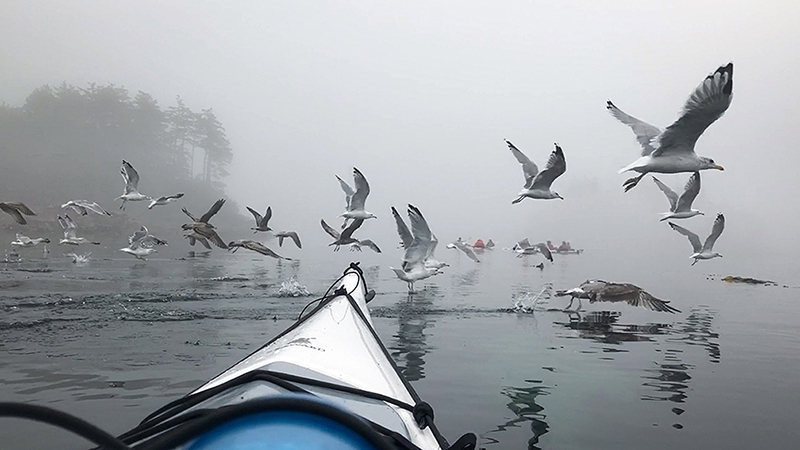 Other critters included bald eagles, dolphins, seals, sea lions and plenty of seagulls.
Other critters included bald eagles, dolphins, seals, sea lions and plenty of seagulls.
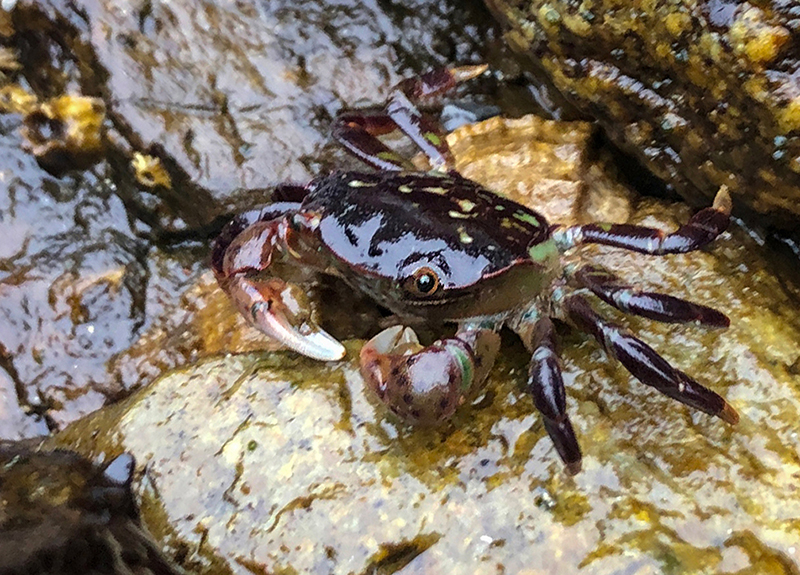
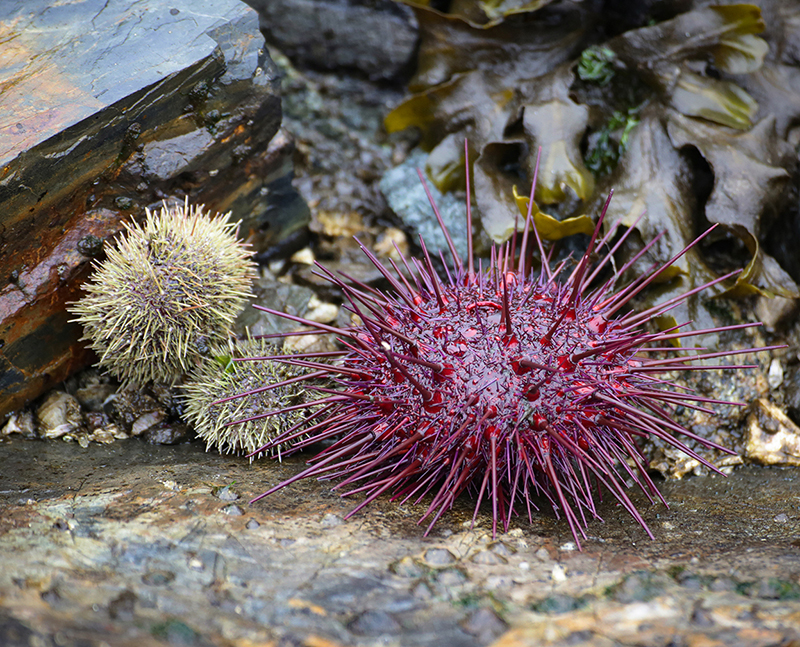 On our last morning, the tide was out as far as we’d yet seen. Pretty soon, the whole group wandered around the shore, checking out crabs, urchins, and other tidal life, calling out the best finds so everyone could share in the wonder.
On our last morning, the tide was out as far as we’d yet seen. Pretty soon, the whole group wandered around the shore, checking out crabs, urchins, and other tidal life, calling out the best finds so everyone could share in the wonder.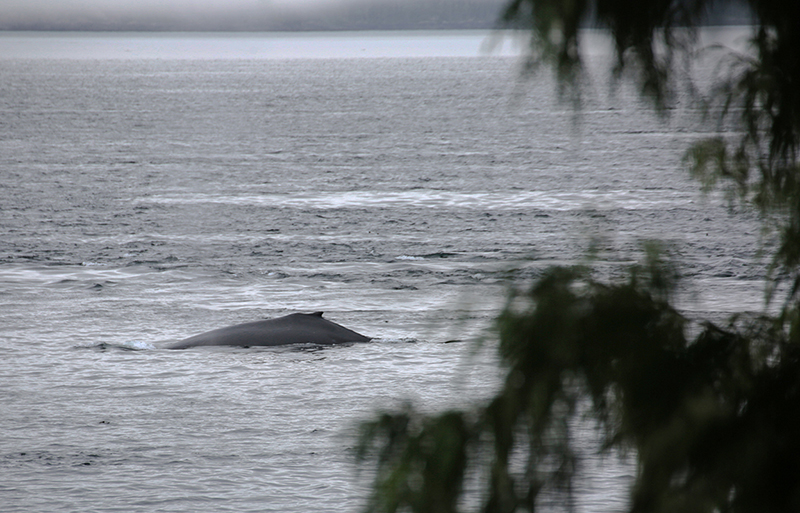 But the highlight of the whole trip was the humpback whales. I could never have predicted so many in one spot. Easily identified by their signature blow of vapour when they exhale, you couldn’t look anywhere for long without seeing one.
But the highlight of the whole trip was the humpback whales. I could never have predicted so many in one spot. Easily identified by their signature blow of vapour when they exhale, you couldn’t look anywhere for long without seeing one.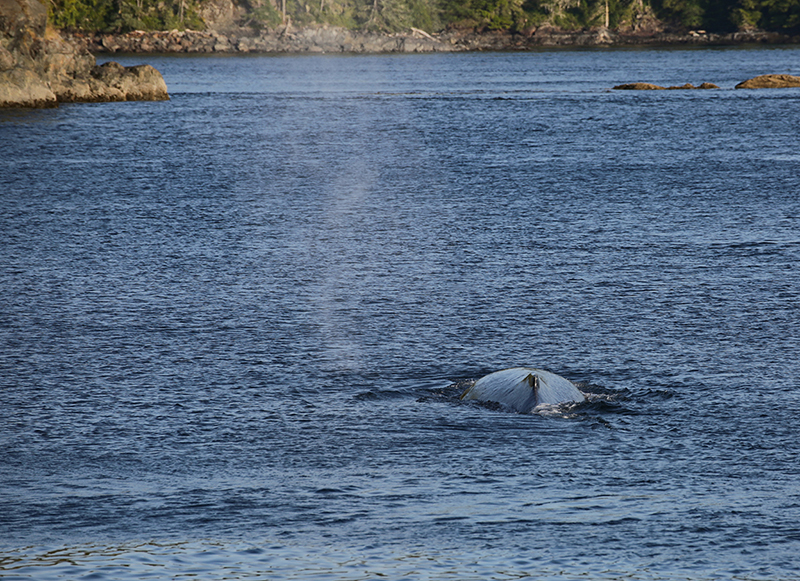 Late Wednesday evening, half the group paddled around the bay with P.J. so he could show them bio-luminescence in the water. Dry and comfortable, I’d opted out, but Shonna enjoyed the experience. Those of us who stayed on land watched them from the shore. Then, suddenly, a humpback surfaced right off camp and looked like it was going into the narrow channel between our camp and Flower Island, where our kayakers were paddling in the failing light.
Late Wednesday evening, half the group paddled around the bay with P.J. so he could show them bio-luminescence in the water. Dry and comfortable, I’d opted out, but Shonna enjoyed the experience. Those of us who stayed on land watched them from the shore. Then, suddenly, a humpback surfaced right off camp and looked like it was going into the narrow channel between our camp and Flower Island, where our kayakers were paddling in the failing light.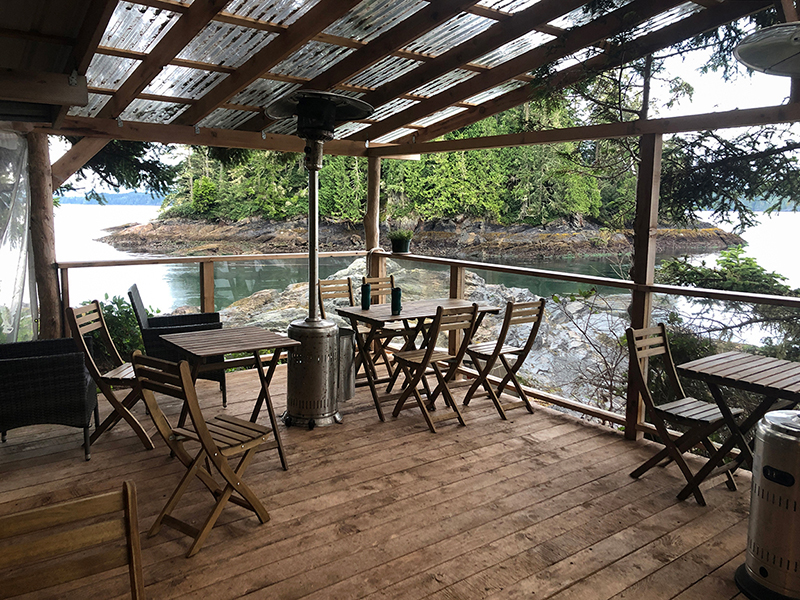 On our final morning on the water, we paddled across a channel in the fog, grouped for safety. Whales were blowing all around us, and while they sounded close, fog plays tricks with noises. It was creepy but exciting, paddling in a cloud with limited visibility.
On our final morning on the water, we paddled across a channel in the fog, grouped for safety. Whales were blowing all around us, and while they sounded close, fog plays tricks with noises. It was creepy but exciting, paddling in a cloud with limited visibility. LOOKING UP FROM THE CAMERA
LOOKING UP FROM THE CAMERA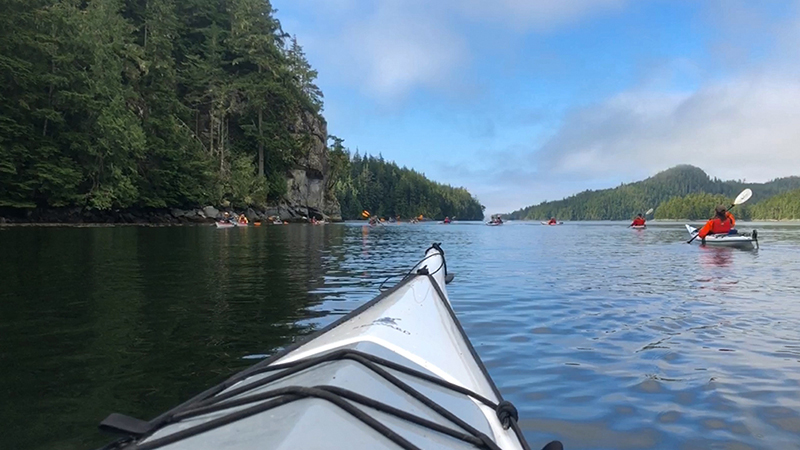 But for most of the shots, I had a waterproof case for my iPhone and a GoPro-style suction mount to secure it to the kayak in front of me, backed up with a tether for when I handheld it. I took plenty of videos and selected screenshots from those when I got home.
But for most of the shots, I had a waterproof case for my iPhone and a GoPro-style suction mount to secure it to the kayak in front of me, backed up with a tether for when I handheld it. I took plenty of videos and selected screenshots from those when I got home.
 Although I have a few paintings in progress, I have none to share right now as I’m dealing with more time-sensitive work.
Although I have a few paintings in progress, I have none to share right now as I’m dealing with more time-sensitive work.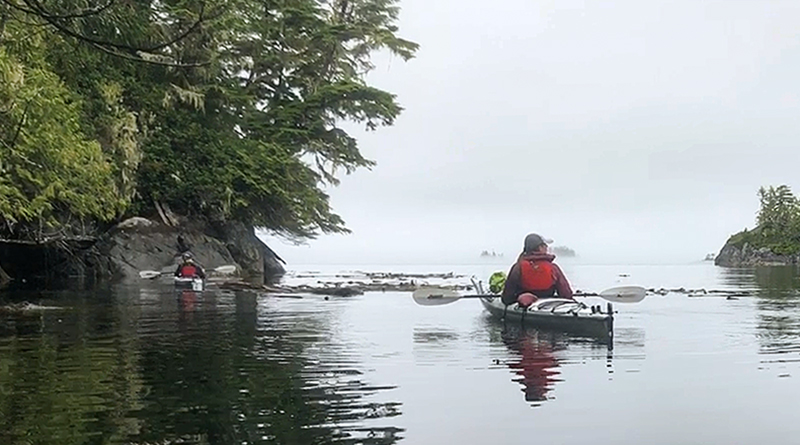 I’m anxious to sort through my photos and write about the experience. But I’ll have to fit it in between catching up with work and taking care of the rest of this week’s duties.
I’m anxious to sort through my photos and write about the experience. But I’ll have to fit it in between catching up with work and taking care of the rest of this week’s duties.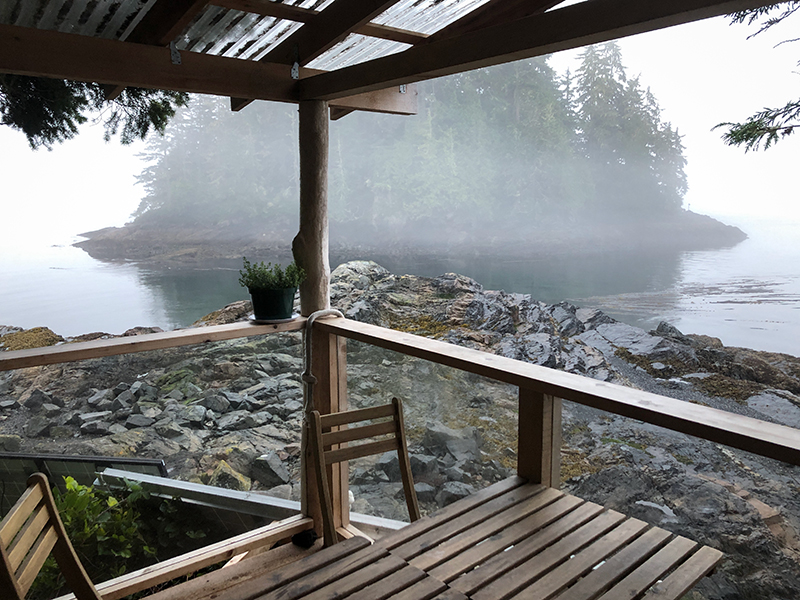 One of the highlights of this trip was the abundance of humpback whales. They were everywhere! There’s nothing like dozing off in a comfortable bed in a large tent at night and waking up each morning to the sound of whales exhaling just offshore.
One of the highlights of this trip was the abundance of humpback whales. They were everywhere! There’s nothing like dozing off in a comfortable bed in a large tent at night and waking up each morning to the sound of whales exhaling just offshore.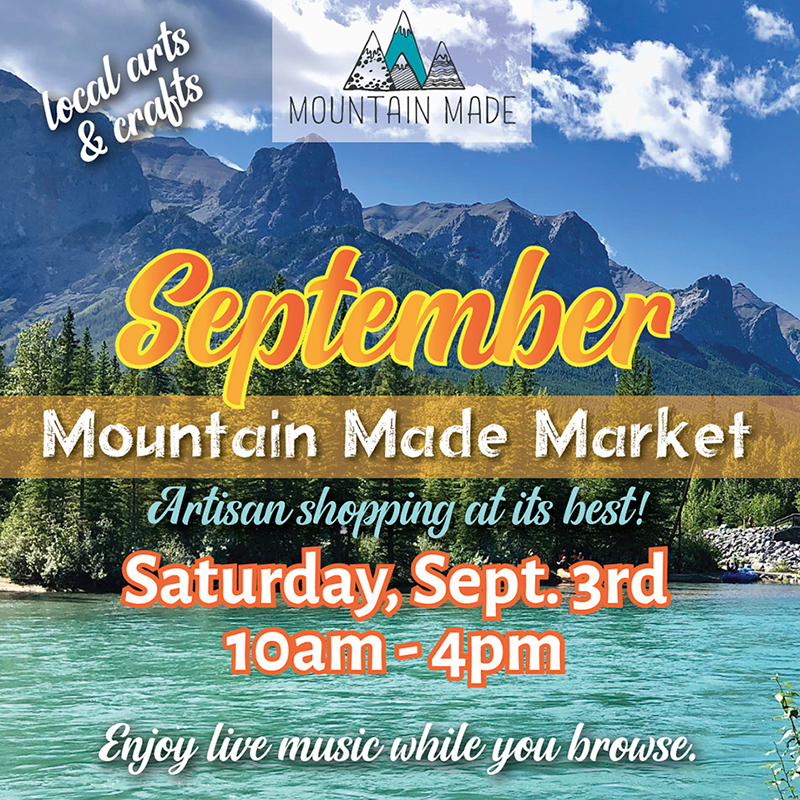 I’ll have another post soon with more photos and thoughts on the trip. I often forget that time away from the desk, especially in a natural environment, does wonders for my state of mind. Refreshed and rejuvenated, I am looking forward to putting a lot of energy into the paintings I’ve got on the go, and excited about the ones I’ve planned for the fall.
I’ll have another post soon with more photos and thoughts on the trip. I often forget that time away from the desk, especially in a natural environment, does wonders for my state of mind. Refreshed and rejuvenated, I am looking forward to putting a lot of energy into the paintings I’ve got on the go, and excited about the ones I’ve planned for the fall.
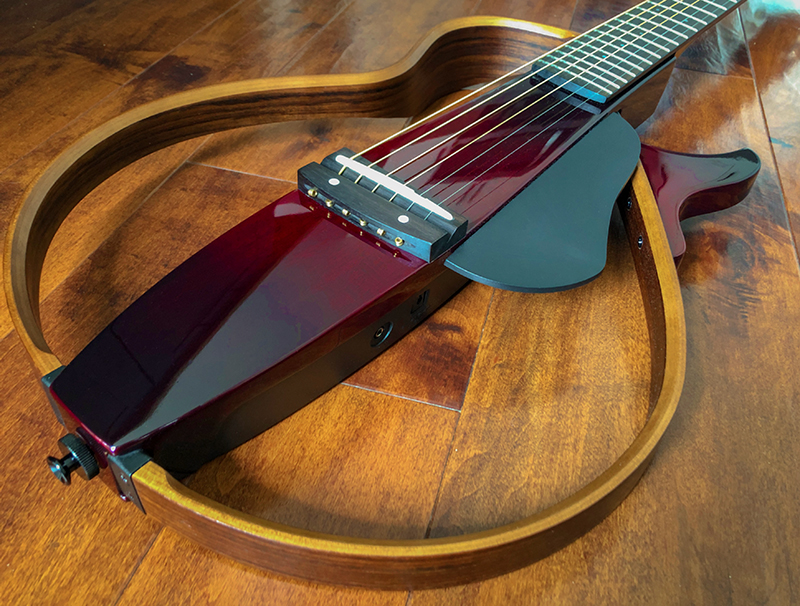 If you had asked me as a teenager what I wanted to be when I grew up, I would have answered that I wanted to be a writer. Most artists have several creative interests. But like with my artwork, I accepted too many offerings from unkind critics and shelved any ambition to do anything with those talents for many years.
If you had asked me as a teenager what I wanted to be when I grew up, I would have answered that I wanted to be a writer. Most artists have several creative interests. But like with my artwork, I accepted too many offerings from unkind critics and shelved any ambition to do anything with those talents for many years.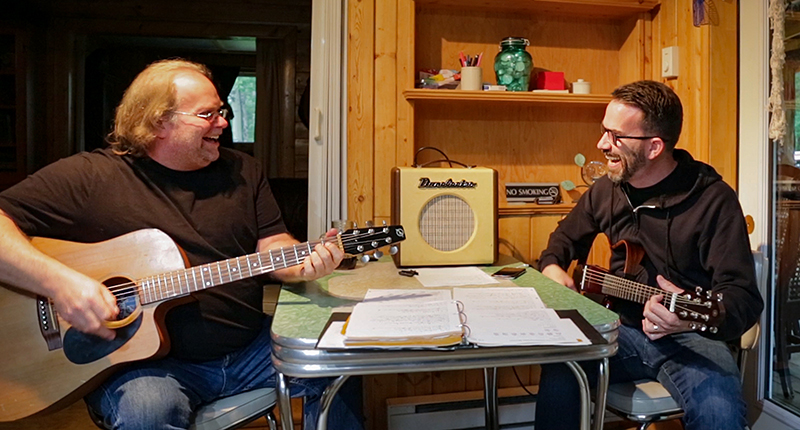 This was a favourite, laughing and clowning around while screwing up the chords and lyrics of American Pie, an old standard from those Crown and Anchor days. We had a great weekend at the cabin and I’m looking forward to the next time when I’ll have a few more months of practice under my belt.
This was a favourite, laughing and clowning around while screwing up the chords and lyrics of American Pie, an old standard from those Crown and Anchor days. We had a great weekend at the cabin and I’m looking forward to the next time when I’ll have a few more months of practice under my belt.
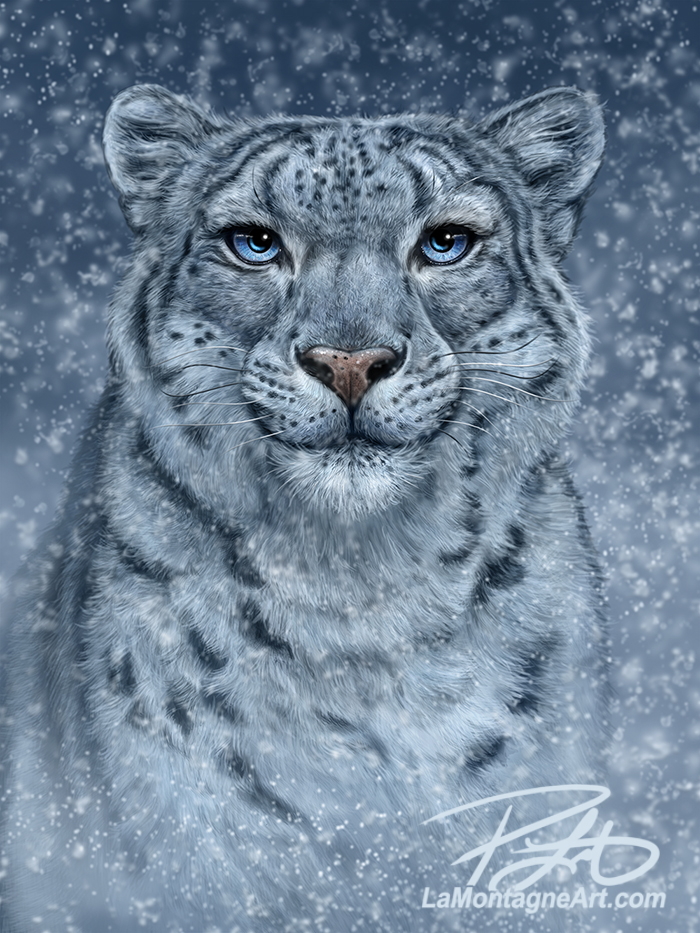 After I finished my recent
After I finished my recent 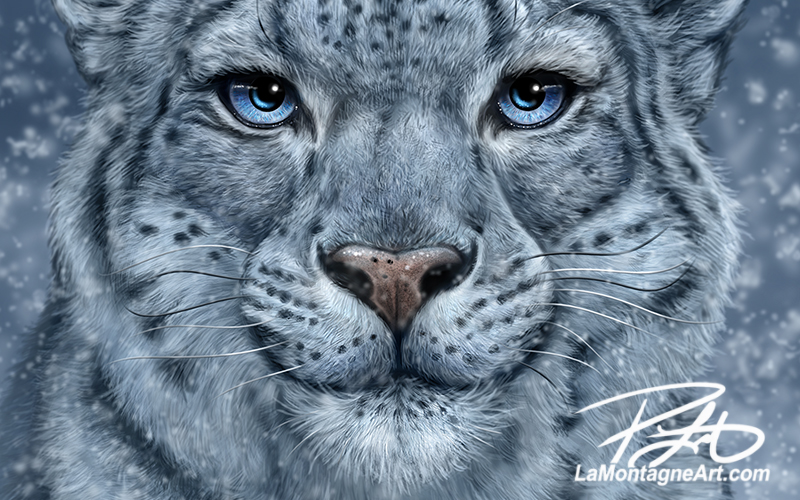 And finally, the very first whimsical wildlife image I painted was a grizzly bear. I’ve painted more than a dozen since, and it remains my favourite animal to paint. It would have been a shame to decide that I’d done enough of them and never got to
And finally, the very first whimsical wildlife image I painted was a grizzly bear. I’ve painted more than a dozen since, and it remains my favourite animal to paint. It would have been a shame to decide that I’d done enough of them and never got to 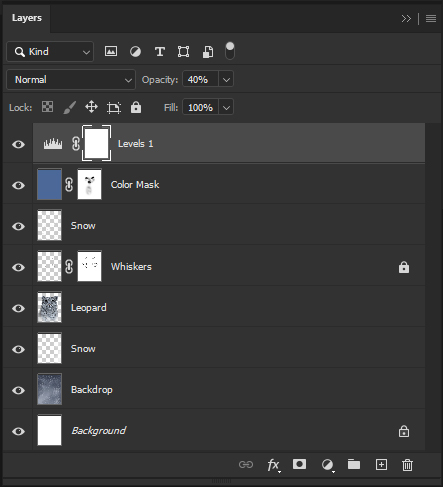 For those interested in the technical side of things, this file is 30” X 40” at 300ppi, with seven layers and an adjustment layer. I usually only have three layers at the end of a piece, the background, backdrop and subject. For this one, however, I wanted to keep some parts separate in case I have some formatting or colour challenges later with licensing.
For those interested in the technical side of things, this file is 30” X 40” at 300ppi, with seven layers and an adjustment layer. I usually only have three layers at the end of a piece, the background, backdrop and subject. For this one, however, I wanted to keep some parts separate in case I have some formatting or colour challenges later with licensing.
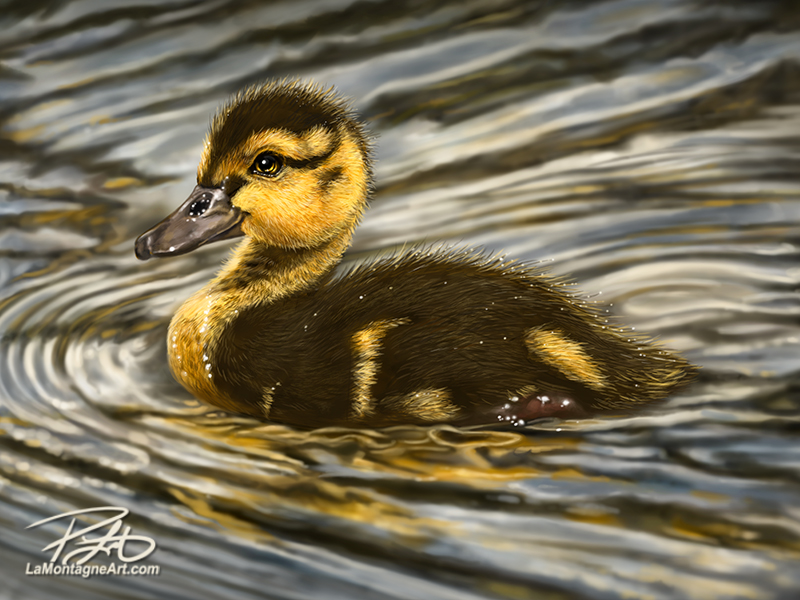 Here’s a little duckling I finished painting this morning. The duckling itself wasn’t difficult, but the water certainly was. Ironic that I began this year with a commission piece where water was also the hardest part of that painting. There will always be room for improvement in any artistic pursuit, so I welcome these unexpected challenges. The work might become boring without them.
Here’s a little duckling I finished painting this morning. The duckling itself wasn’t difficult, but the water certainly was. Ironic that I began this year with a commission piece where water was also the hardest part of that painting. There will always be room for improvement in any artistic pursuit, so I welcome these unexpected challenges. The work might become boring without them.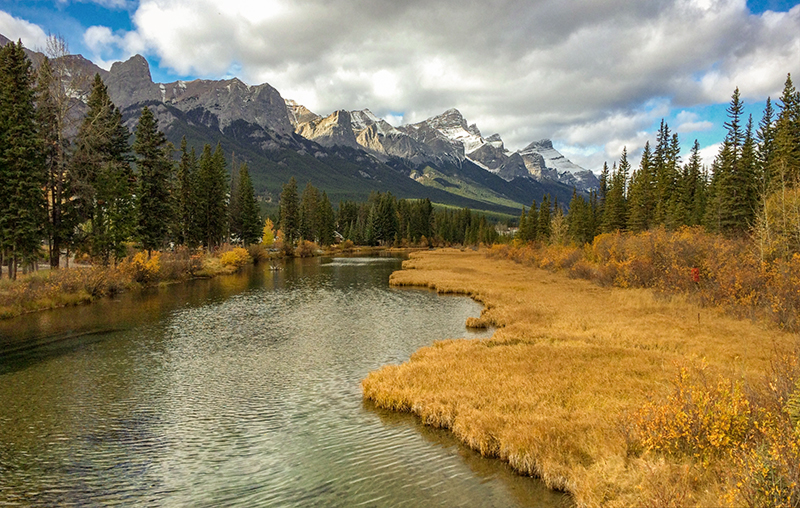 I took the reference for this painting four years ago from the boardwalk that winds through the Policeman’s Creek wetlands here in Canmore. Easily accessible for people of all fitness levels, it’s located in the middle of town and might as well be an urban park. It’s a pretty walk, a nice shortcut from where we live to downtown Canmore, and preferable to walking on the sidewalk of a busy street.
I took the reference for this painting four years ago from the boardwalk that winds through the Policeman’s Creek wetlands here in Canmore. Easily accessible for people of all fitness levels, it’s located in the middle of town and might as well be an urban park. It’s a pretty walk, a nice shortcut from where we live to downtown Canmore, and preferable to walking on the sidewalk of a busy street.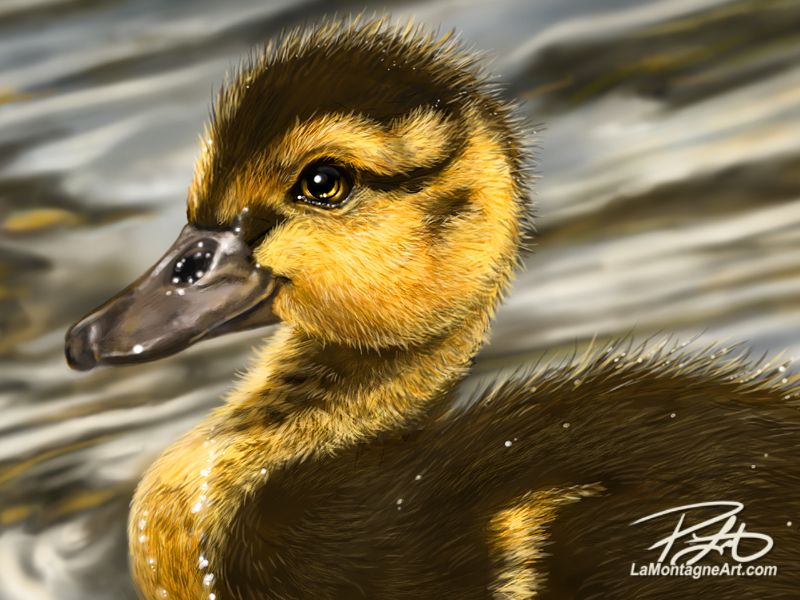 The reason for fewer paintings is no mystery. Despite the dramatic decline in the newspaper industry, it’s still a big chunk of my income, and I’m unable to put off or set aside my daily editorial cartoon deadlines. As a result, those take priority every day and painting time is often sacrificed for the cartoons.
The reason for fewer paintings is no mystery. Despite the dramatic decline in the newspaper industry, it’s still a big chunk of my income, and I’m unable to put off or set aside my daily editorial cartoon deadlines. As a result, those take priority every day and painting time is often sacrificed for the cartoons.
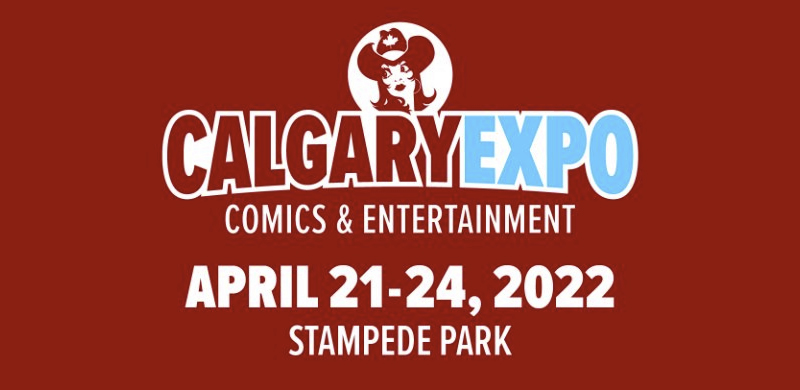
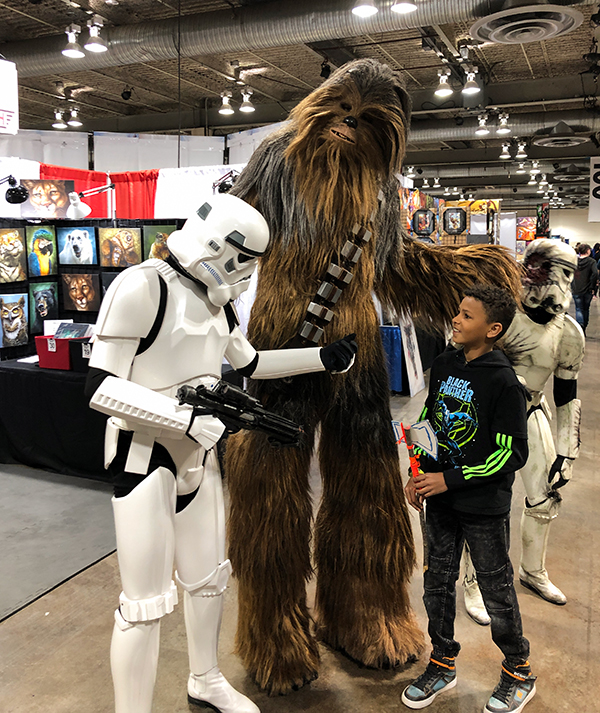 Truly an all-ages, family-friendly event, it has consistently been one of the most positive experiences I’ve had each year. The people-watching alone is worth attending, and the whole event has a circus feel.
Truly an all-ages, family-friendly event, it has consistently been one of the most positive experiences I’ve had each year. The people-watching alone is worth attending, and the whole event has a circus feel.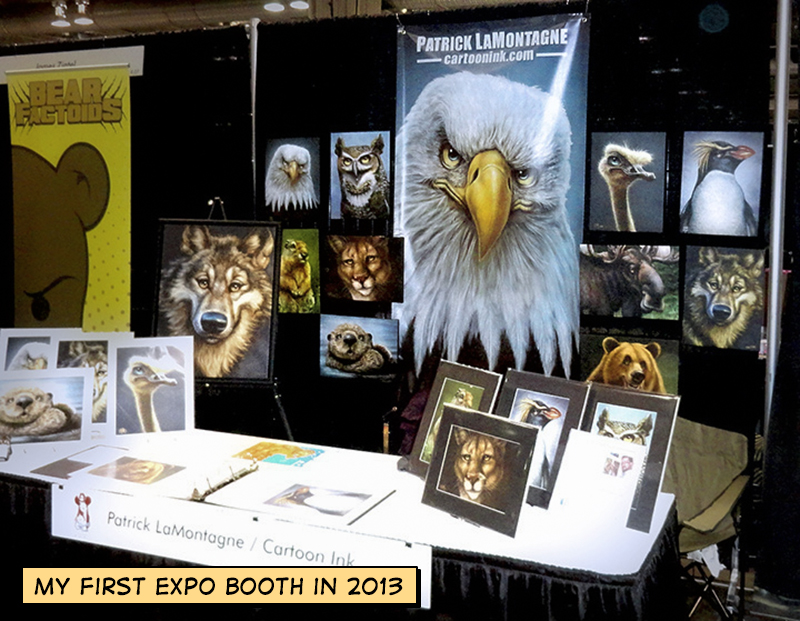
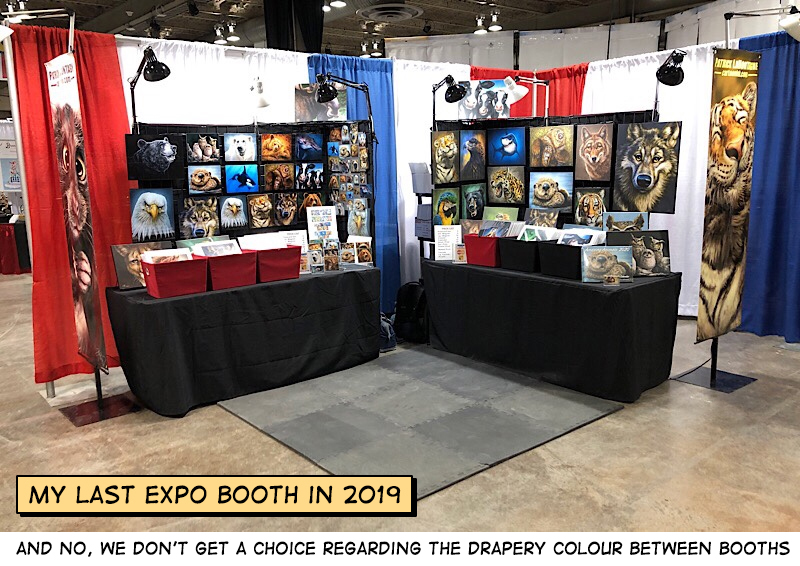 Neighbouring vendors form temporary communities at these shows. We watch each other’s booths for bathroom breaks, might do a coffee run if one of us is going, and we talk during set-up and slow periods. I hear a common question: “How did you do today?”
Neighbouring vendors form temporary communities at these shows. We watch each other’s booths for bathroom breaks, might do a coffee run if one of us is going, and we talk during set-up and slow periods. I hear a common question: “How did you do today?”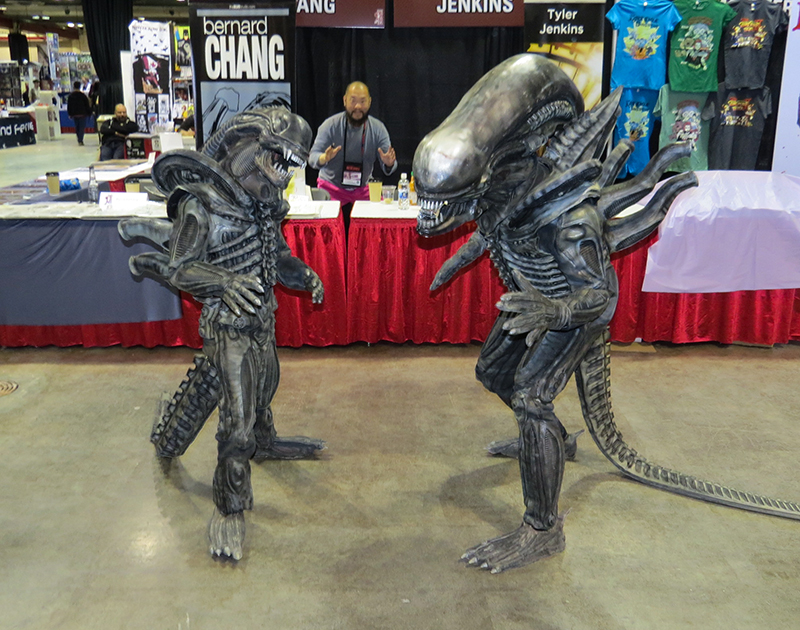 That explains the hard costs, but what about my time?
That explains the hard costs, but what about my time?
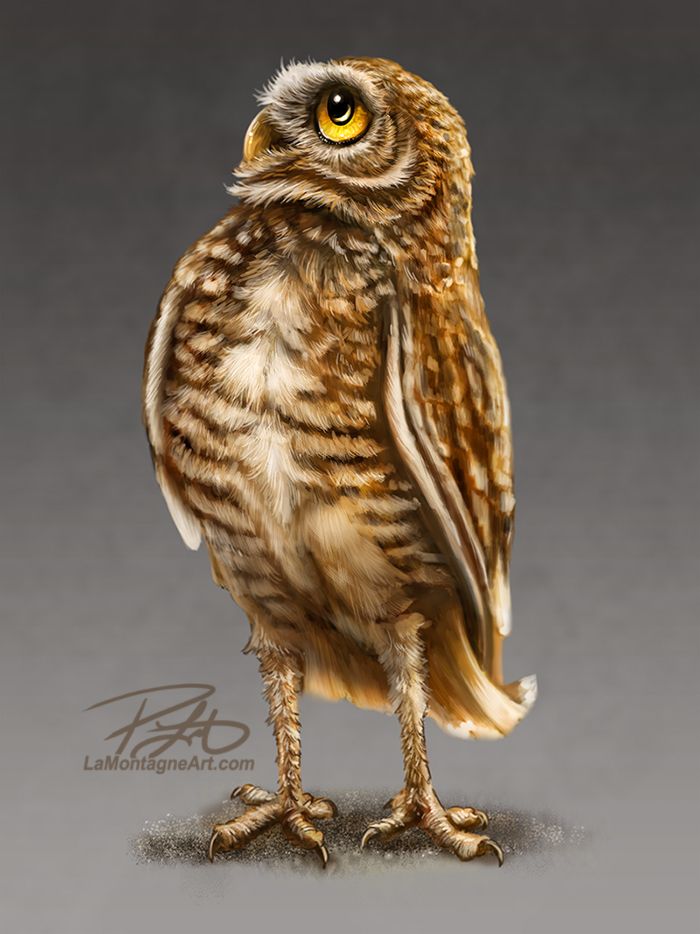 Here’s the fourth burrowing owl in the series, which will be part of a larger piece featuring multiple owls in different poses. I don’t know how many owls yet, and I only have a rough vision of it.
Here’s the fourth burrowing owl in the series, which will be part of a larger piece featuring multiple owls in different poses. I don’t know how many owls yet, and I only have a rough vision of it.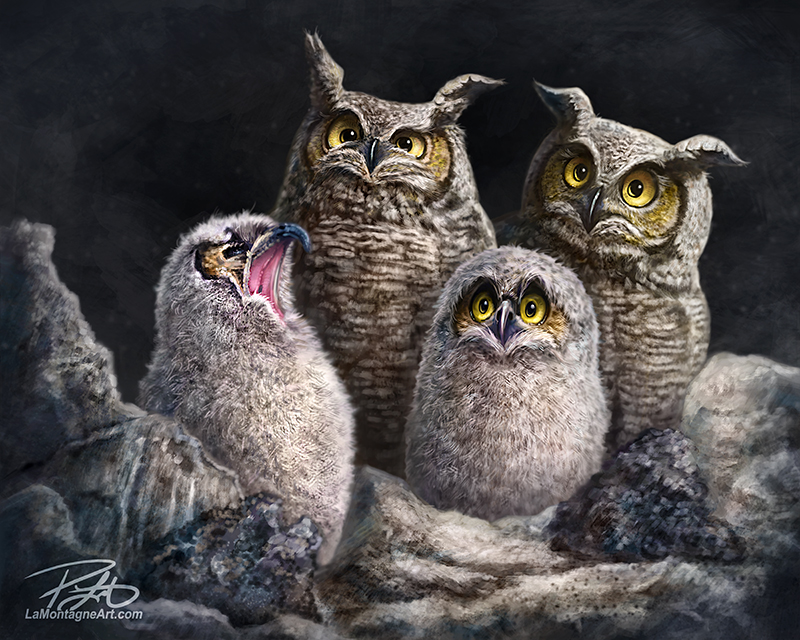

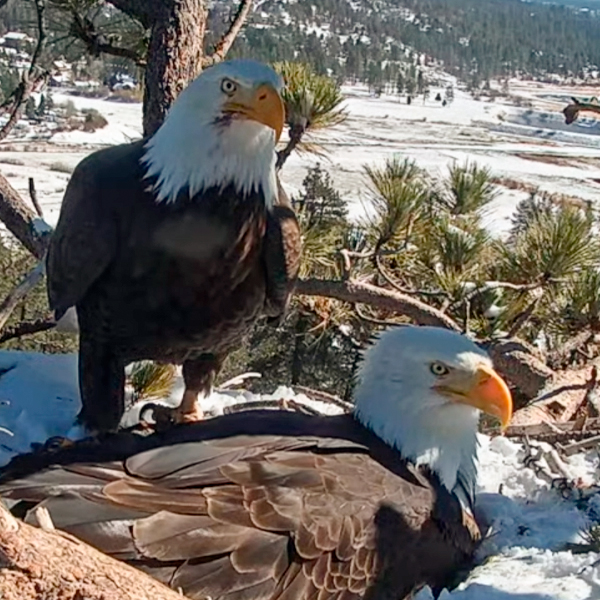
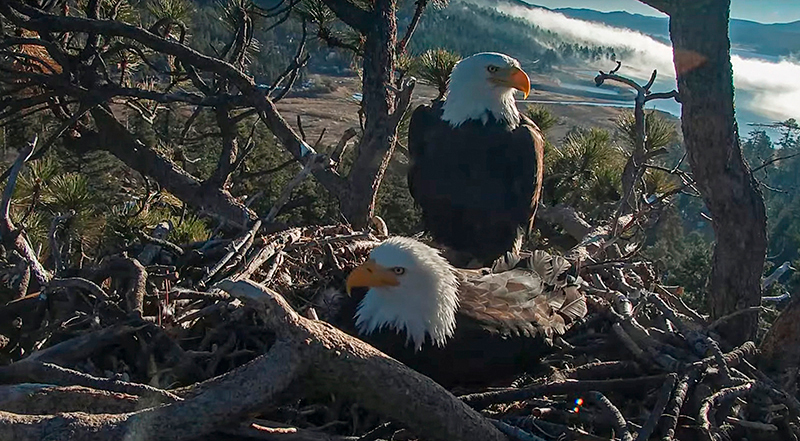 Late last month, a subscriber sent me a
Late last month, a subscriber sent me a 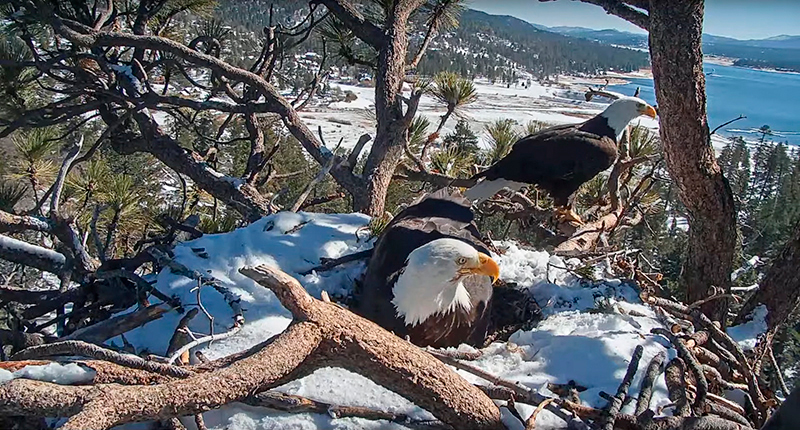
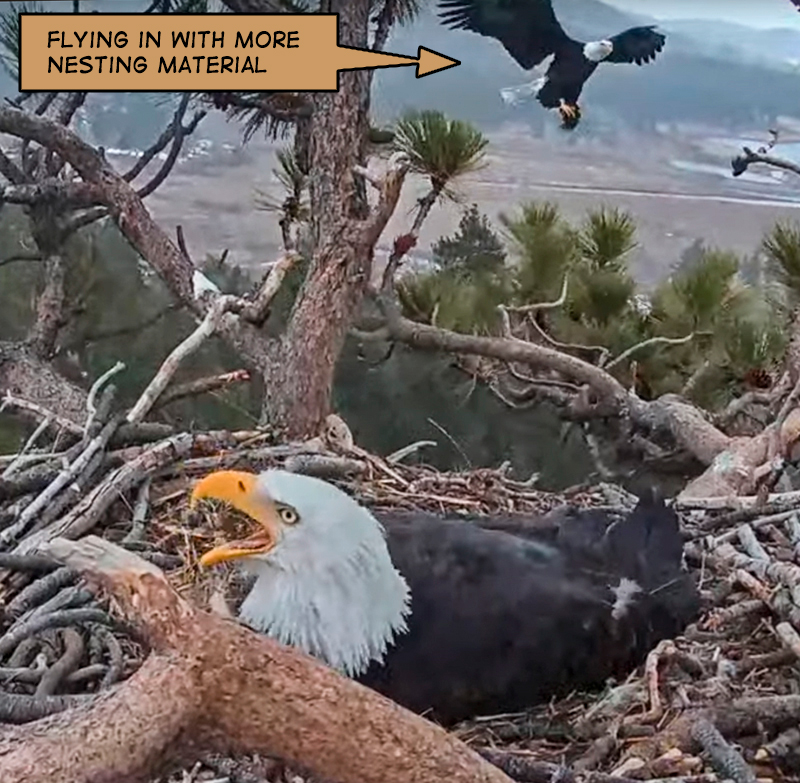
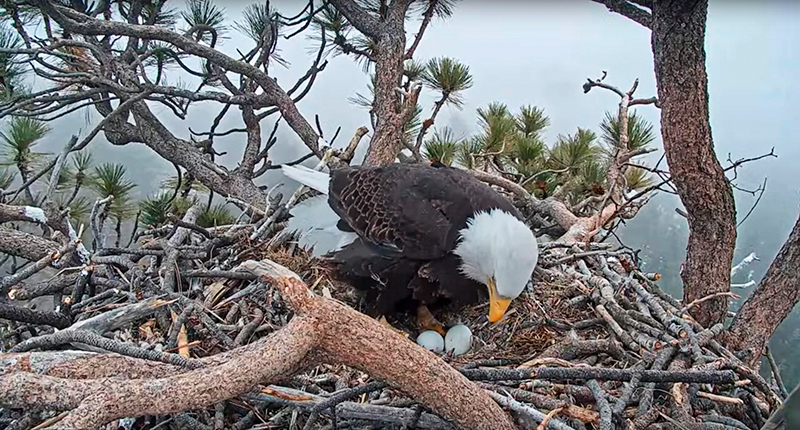
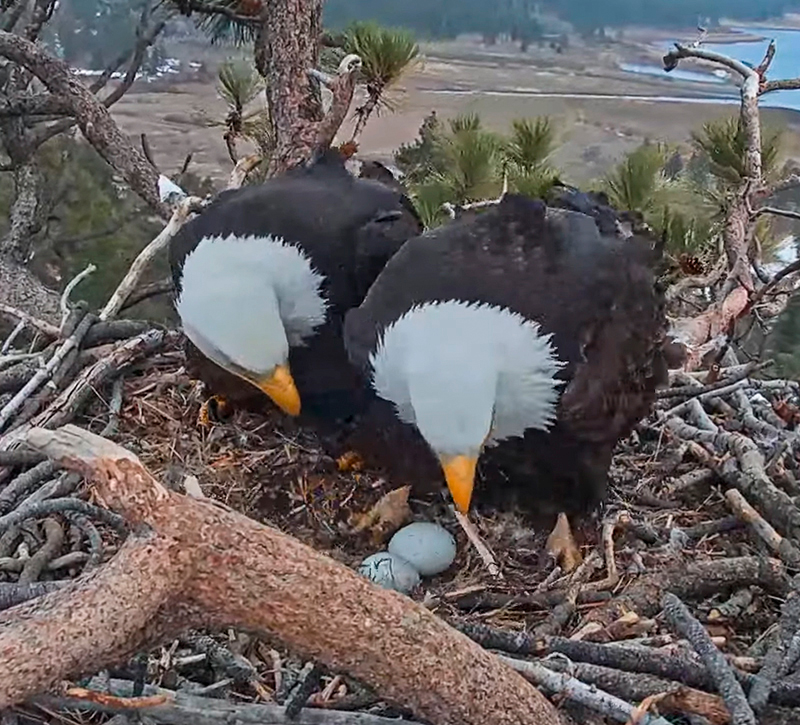 I’ve enjoyed watching the two eagles switch off incubating the eggs so the other can go eat, fending off marauding ravens, and interacting with each other. The chatter between them when one flies in is amusing and fascinating. That tree also gets rocking when the Santa Ana winds blow over the lake. A snowstorm blew in fast and heavy last week, and while the eagles certainly didn’t look like they were enjoying themselves, they handled it well.
I’ve enjoyed watching the two eagles switch off incubating the eggs so the other can go eat, fending off marauding ravens, and interacting with each other. The chatter between them when one flies in is amusing and fascinating. That tree also gets rocking when the Santa Ana winds blow over the lake. A snowstorm blew in fast and heavy last week, and while the eagles certainly didn’t look like they were enjoying themselves, they handled it well.